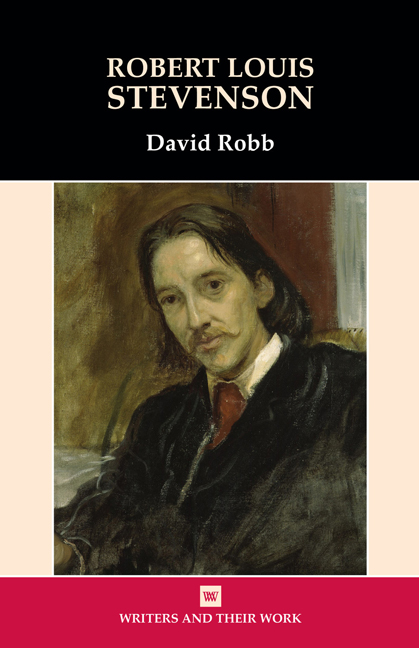Book contents
- Frontmatter
- Dedication
- Contents
- Acknowledgements
- Biographical Outline
- Abbreviations and References
- 1 Introduction: Travels With and Without a Donkey
- 2 ‘A brilliant and romantic grace’
- 3 ‘So easily the master of us all’
- 4 ‘Voices in the Darkness’
- 5 ‘Under the wide and starry sky’
- Notes
- Select Bibliography
- Index
2 - ‘A brilliant and romantic grace’
- Frontmatter
- Dedication
- Contents
- Acknowledgements
- Biographical Outline
- Abbreviations and References
- 1 Introduction: Travels With and Without a Donkey
- 2 ‘A brilliant and romantic grace’
- 3 ‘So easily the master of us all’
- 4 ‘Voices in the Darkness’
- 5 ‘Under the wide and starry sky’
- Notes
- Select Bibliography
- Index
Summary
W. E. Henley so describes Stevenson in his sonnet ‘Apparition’, from his sonnet sequence ‘In Hospital’ (published 1888). They had met in 1875, when Leslie Stephen brought Stevenson to visit Henley in hospital in Edinburgh. That other literary mentor, Sidney Colvin, introduced to Stevenson in 1873, had been equally fascinated with the young Scot. These were the years when influential men of letters were first realizing that in Stevenson they had found the kind of writer they particularly approved of, and that he and his work were to be nurtured.
Stevenson first began to make an impression on the wider reading public with the important products of 1878–9, Travels with a Donkey and New Arabian Nights. Thereafter, in the middle of the five-year period which culminated in the writing of Prince Otto and The Black Arrow, came the work which first caused him to be universally perceived as an important and popular writer, Treasure Island. This early period in his career produced, however, not only the story which many still regard as their favourite Stevenson novel of all, but a diverse and fascinating clutch of works which should be better known and more widely enjoyed.
The period 1878–83 was dominated, in personal terms, with the dramas and intensities of his developing relationship with Fanny Osbourne. He had first met her in France in 1876, had come to love her in the succeeding two years, and was desolate when she suddenly returned to California. Stevenson made his quixotic and life-threatening journey in pursuit of her in 1879 and they were married in 1880. They returned to Britain, experiencing the dreich but astonishingly productive family holiday in Pitlochry and Braemar in 1881, where Stevenson wrote ‘The Merry Men’, ‘Thrawn Janet’ and most of Treasure Island. Looking for a permanent home away from the Scottish climate, the married couple first tried France, then settled in Bournemouth, Stevenson's health being the ever more urgent consideration.
NEW ARABIAN NIGHTS (WRITTEN 1878)
The stories eventually collected and published in 1882 as a volume entitled New Arabian Nights were among Stevenson's very first works of prose fiction. They had been preceded in 1877 by his earliest efforts of all, including the short stories ‘A Lodging for the Night’, ‘The Sire de Maletroit's Door’ and ‘Will o’ the Mill’.
- Type
- Chapter
- Information
- Robert Louis Stevenson , pp. 7 - 49Publisher: Liverpool University PressPrint publication year: 2014

